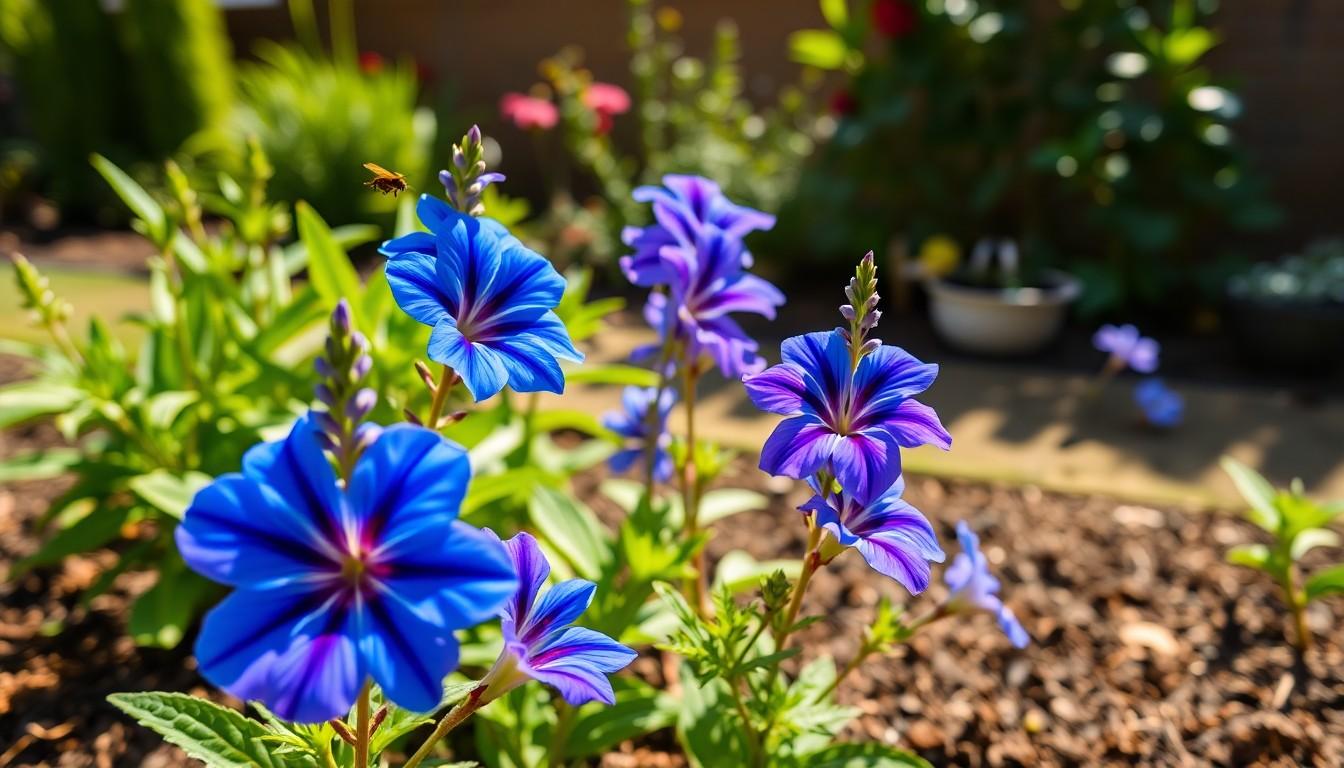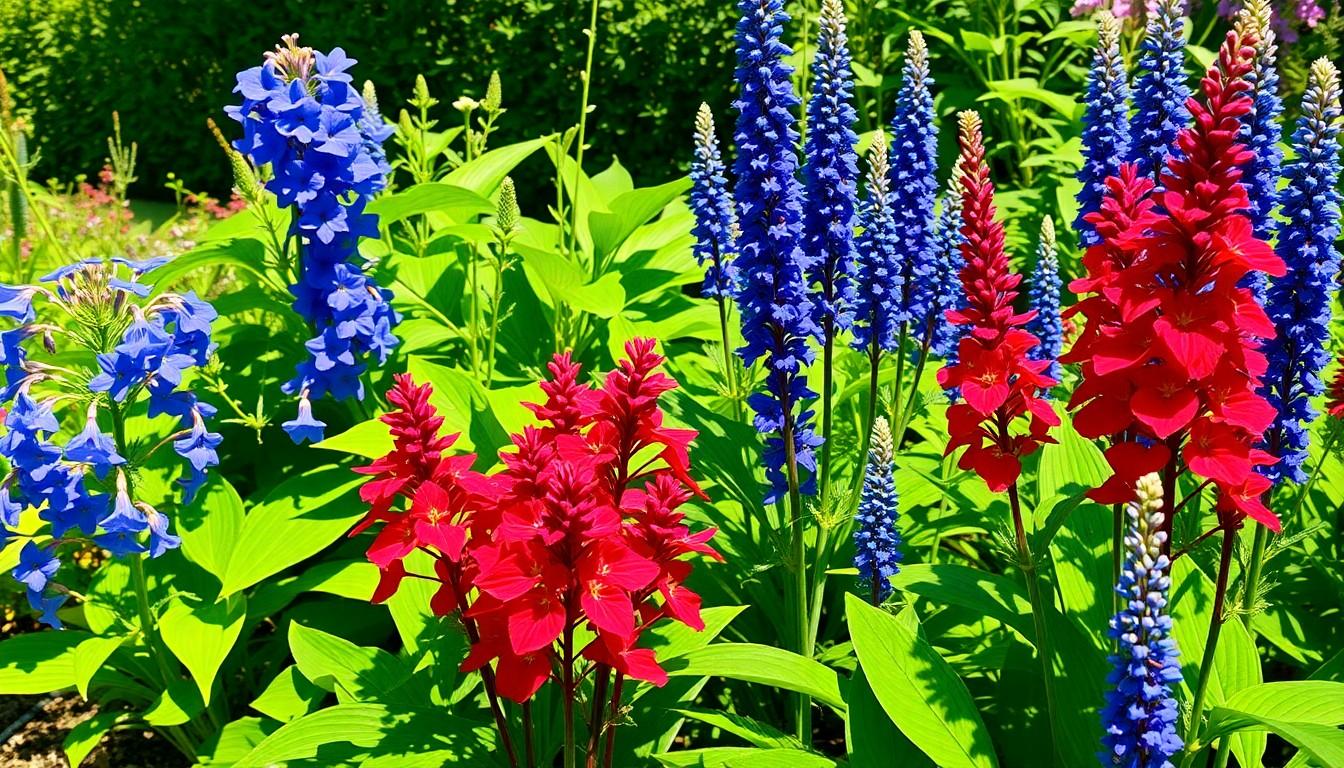The Best Fluffy Pancakes recipe you will fall in love with. Full of tips and tricks to help you make the best pancakes.

Lobelia Plant Care: Your Ultimate Guide to Vibrant Blooms and Garden Success
Lobelia plants are like the party guests of the garden—vibrant, charming, and always ready to steal the spotlight. With their stunning blue and purple flowers, they add a splash of color that can make even the dullest backyard feel like a botanical wonderland. But as with any guest, they require a little TLC to keep them thriving.
Caring for lobelia might seem daunting, but fear not. It’s not rocket science; it’s more like a fun game of plant matchmaking. With the right light, water, and a few expert tips, anyone can cultivate these beauties. So, roll up those sleeves and get ready to impress your neighbors with your newfound green thumb. After all, who wouldn’t want a garden that’s the envy of the block?
Overview of Lobelia Plant Care
Lobelia plants thrive in full sun to partial shade. Providing at least six hours of sunlight daily enhances blooming. Soil requirements include well-draining, fertile conditions. Amending the soil with compost promotes healthy growth.
Watering practices are crucial for lobelia management. Regular watering maintains soil moisture, but avoiding waterlogging is essential. Consider checking the soil’s top inch; dry soil indicates watering is necessary.
Fertilization supports robust flowering. Use a balanced, slow-release fertilizer every four to six weeks during the growing season. Observing plant growth can signal when to apply nutrients for optimal health.
Pruning techniques maximize blooming potential. Regular deadheading encourages more flowers while extending the blooming period. Cut back leggy growth to promote a bushier appearance and enhance aesthetics.
Pest control maintains plant health. Aphids and slugs may pose threats, so monitoring for these pests is critical. Implementing organic solutions like neem oil can deter pests effectively.
Disease prevention contributes to longevity. Ensure good air circulation around plants to minimize fungal infections. Recognizing wilting or yellowing leaves early helps in addressing potential issues promptly.
Using these care techniques, lobelia plants reward gardeners with vibrant colors and prolonged blooming, transforming outdoor spaces into picturesque displays.
Choosing the Right Lobelia Variety

Selecting the appropriate lobelia variety enhances garden aesthetics and growth success. Different species cater to various needs and preferences.
Annual vs. Perennial Lobelia
Annual lobelia varieties thrive for one growing season, offering vibrant blooms. These plants, like Lobelia erinus, excel in containers and hanging baskets. They benefit from full sun exposure, providing dazzling color until frost. Perennial lobelia, such as Lobelia cardinalis, returns year after year. These resilient plants flourish in garden beds and attract pollinators. Choosing between annual and perennial options depends on desired longevity and maintenance level.
Popular Lobelia Species
Several lobelia species stand out among gardeners. Lobelia erinus, frequently known as trailing lobelia, displays cascading growth and vibrant blue or purple flowers. Lobelia cardinalis, or cardinal flower, showcases striking red blooms, thriving in wetland areas and attracting hummingbirds. Lobelia siphilitica, recognized as great blue lobelia, features tall spikes of blue flowers, preferring partial shade and moist conditions. Each species offers unique characteristics, assisting gardeners in selecting the best variety for their specific environment and aesthetic vision.
Essential Growing Conditions
Lobelia plants require specific growing conditions to thrive. Understanding these requirements leads to successful care and vibrant blooms.
Sunlight Requirements
Lobelia thrives in full sun to partial shade. Providing at least six hours of direct sunlight daily encourages optimal blooming. Varieties like Lobelia erinus prefer bright locations, while others, such as Lobelia cardinalis, can tolerate light shade. Observing the plant’s response to light helps in adjusting its placement. Flowering becomes robust when plants receive adequate sunlight exposure.
Soil Preferences
Well-draining and fertile soil supports healthy lobelia growth. Organic matter, such as compost, enriches the soil and improves drainage. Aim for a slightly acidic to neutral pH for the best results. Avoid heavy clay or overly sandy substrates that retain or drain too much moisture. Regularly checking soil quality contributes to the plant’s vitality and blooming potential.
Temperature Considerations
Lobelia enjoys moderate temperatures, thriving best at 60°F to 70°F. They flourish during spring and fall, appreciating cooler conditions. High temperatures, especially above 80°F, can stress or harm the plants. Frost sensitivity requires caution, as lobelia cannot survive freezing conditions. Monitoring local weather patterns ensures optimal cultivation and health of the lobelia plants.
Watering and Fertilization Techniques
Effective watering and proper fertilization significantly enhance lobelia health and blooming potential. Maintaining a consistent care routine ensures vibrant flowers.
Proper Watering Practices
Watering lobelia requires attention to moisture levels. Soil should remain consistently moist but never waterlogged. Check the top inch of soil; if it’s dry, water thoroughly until excess drains out. Container plants may require more frequent watering than those in garden beds. During hot summer months, monitor daily to prevent wilting. Early morning watering is beneficial, allowing foliage to dry quickly and reducing disease risk.
Ideal Fertilizer Types
Fertilizing lobelia supports robust growth and colorful blooms. A balanced, slow-release fertilizer works well, applied every four to six weeks during the growing season. Look for fertilizers with equal N-P-K ratios, like 10-10-10, for optimal results. Organic options, such as fish emulsion or well-aged compost, enrich the soil without harming beneficial microbes. Fertilize lightly; over-fertilization can harm growth and lead to leggy plants. Adapting fertilization frequency based on plant performance promotes health and flowering.
Pruning and Maintenance Strategies
Pruning and maintenance play vital roles in sustaining the health and beauty of lobelia plants.
When to Prune Lobelia
Optimal pruning occurs throughout the growing season. Regular deadheading promotes continual blooming by removing spent flowers. Best practices recommend cutting back leggy growth after the first bloom phase. Early to mid-summer serves as an ideal time for this task. Checking for any wilting or unhealthy stems also contributes to overall plant vigor. By ignoring these indicators, one’s lobelia might not reach its full potential.
Tips for Healthy Growth
Healthy growth hinges on consistent watering and nutrient management. Starting with adequate sunlight, lobelia thrives in full sun to partial shade. Supplementing soil with compost supports optimal nutrient availability. Ensuring good air circulation prevents disease and helps maintain plant integrity. Monitoring for pests, such as aphids, enables early intervention. Using organic solutions like neem oil can manage infestations effectively. Adapting care techniques based on environmental conditions enhances overall performance. By following these strategies, gardeners can cultivate vibrant lobelia plants with ease.
Common Pests and Diseases
Lobelia plants face threats from several pests and diseases that can impede growth. Recognizing these issues early helps ensure a healthy garden.
Identifying Pests
Aphids often cluster on new growth, sucking sap and causing distortion. Spots indicate the presence of spider mites, which thrive in dry conditions and create fine webs. Slugs leave irregular holes in leaves, signaling their nighttime feeding habits. Whiteflies resemble tiny moths and can cause leaf yellowing and drop. Early detection through regular inspection ensures prompt action against these pests.
Preventative Measures
Utilizing companion plants that deter pests can protect lobelia. Routine checks encourage identification of problems before they escalate. Healthy soil improves plant resilience, making it less attractive to pests. Providing good air circulation reduces humidity, discouraging mites and fungal diseases. Organic insecticides, like neem oil, offer an effective treatment option while being safe for the environment.
Conclusion
Caring for lobelia plants opens the door to a vibrant and colorful garden. With the right conditions and care techniques, these beautiful flowers can flourish and create stunning displays. Regular attention to sunlight, soil, and watering will ensure healthy growth and abundant blooms.
By implementing effective pruning and pest control strategies, gardeners can maintain the aesthetic appeal and vitality of their lobelia. Choosing the right variety tailored to specific garden needs can further enhance the overall impact. With dedication and the right approach, anyone can enjoy the beauty and charm that lobelia brings to their outdoor spaces.
